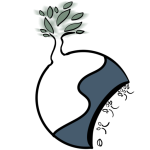We have initially explored the relationship between the aesthetics of the Book of Changes and calligraphy. Truly grasping this connection is no easy task. I hope everyone can build confidence—I am confident I can continue teaching, and you students should also persist in listening. Along the way, some confusion is bound to arise.
Earlier, one student raised a point: “Before this, it was hard to feel confused in lectures. But in your class, I suddenly feel confused not just about calligraphy, but about many things beyond it as well.” Confusion comes in two forms: one is absolute confusion, which blocks your path; the other is positive confusion—through this state, we are prompted to rethink calligraphy and the Book of Changes.
The Analects touches on this topic. Zengzi said, “I daily examine myself on three points: whether, in transacting business for others, I may have been unfaithful; whether, in intercourse with friends, I may have been untrustworthy; whether I may have neglected to practice what has been taught.” How many of us today examine ourselves three times a day? Forget daily—do we even do it three times a week? Forget weekly—do we do it three times a month? These “three times” represent his constant self-reflection. Without reflection, our lives are wasted away. Once we begin to reflect, confusion arises.
That student also mentioned “mystery” (xuánmiào). Indeed, as the Tao Te Ching says,

发表回复